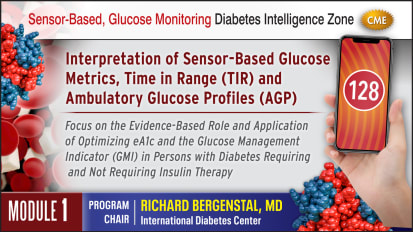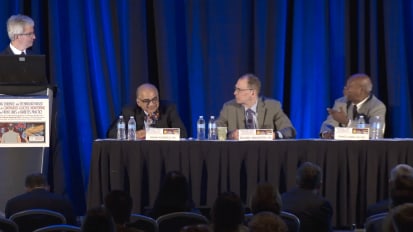Richard Bergenstal, MD

Executive Director
International Diabetes Center- Park Nicollet
Minneapolis, MN, USA

Executive Director
International Diabetes Center- Park Nicollet
Minneapolis, MN, USA
Related Videos
 Video
Video
The evidence and guideline-based rationale for employing sensor-based glucose monitoring (CGM) and ambulatory glucose profiles (AGP) as a foundational strategy for managing patients with diabetes.
 Video
Video
Understanding an AGP report: What are the clinical implications of Time in Range (TIR) and the Glucose Management Indicator (GMI), and how should the clinician approach specific glucose metrics on the AGP to optimize diabetes management?
 Video
Video
Translating AGP glucose metrics (TIR, GMI) into action steps and interventions at the front lines of care for persons with Type 2 or Type 1 diabetes: practical, patient-centric roadmap.
 Video
Video
Case-Based, Real World Applications of Sensor-Based CGM to the Front Lines of Diabetes Care
The Faculty Discuss, Analyze, and Provide Expert-Based Consultation for How to Interpret AGP Reports and Make Therapeutic Decisions in Persons with Type 2 and Type 1 Diabetes
 Video
Video
The Evolving and Foundational Role of Personalized HA1c to Optimize Management of Diabetes
The Use of Ambulatory Glucose Profiling (AGP) to Optimize Clinical Outcomes—New Consensus-Based Guidance Supporting CGM Across the Spectrum of Diabetes Care